Last updated: February 1, 2023
Article
Robert Todd Lincoln and Presidential Assassinations
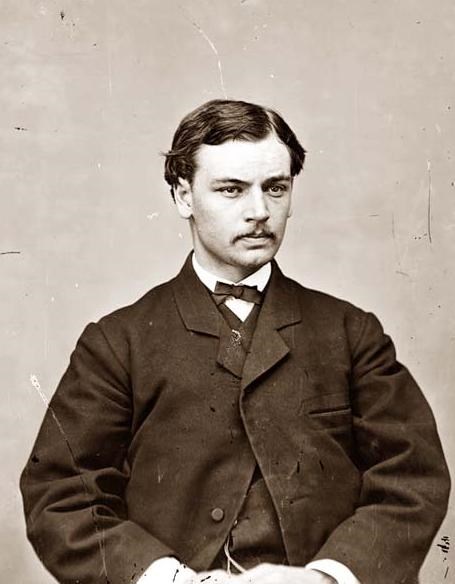
Library of Congress
Robert Todd Lincoln, eldest son of President and Mrs. Abraham Lincoln, felt cursed. One of his brothers, Edward, died as a boy in Springfield, Illinois long before their father became president. A second brother, William, died in the White House on February 20, 1862. The death of “Willie” made the Civil War’s dark days that much darker for the Lincoln family. Robert Lincoln’s last brother, Thomas, whom their father had called “Tad,” died at age 18 in 1871. In the years after his father’s death, Robert Lincoln also watched his mother, Mary, descend into financial hardship and manic depression. At one point, he committed her to an asylum. His mother died at age 63 in 1882.
Sadly, Robert Lincoln was very familiar with death. However, it was not the deaths of his brothers or his mother for which he is most famous or for which he believed himself to be cursed. Rather, it was his close connection to three presidential assassinations in just 36 years.
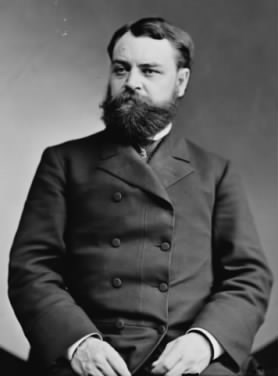
Library of Congress
President and Mrs. Lincoln invited their son, then Capt. Robert T. Lincoln of Gen. Ulysses S. Grant’s staff, to Ford’s Theater to see a performance of Our American Cousin on the night of April 14, 1865. The younger Lincoln declined, telling his father that he planned to retire early that night. Several different people claimed to have been the one to inform him of John Wilkes Booth’s attack on his father at the theater, and Lincoln himself remembered only that numerous people came to him that night with the awful news. He immediately left for the Petersen house, where his father, unconscious but alive, had been taken after Booth shot him. Future Secretary of State John Hay, one of Abraham Lincoln’s private secretaries and a lifelong friend of Robert’s, wrote that, “After a natural outburst of grief, young Lincoln devoted himself the rest of the night to soothing and comforting his mother.” Robert was there at 7:22 a.m. on April 15 when President Lincoln died.
Over the next decade-and-a-half, many Republicans tried to talk Robert Lincoln into running for political office. Lincoln always declined, partially due to lack of interest but also because he knew his greatest appeal to the Republican Party was not his ability but his surname. In early 1881, however, he relented and agreed to serve as Secretary of War under President James A. Garfield.
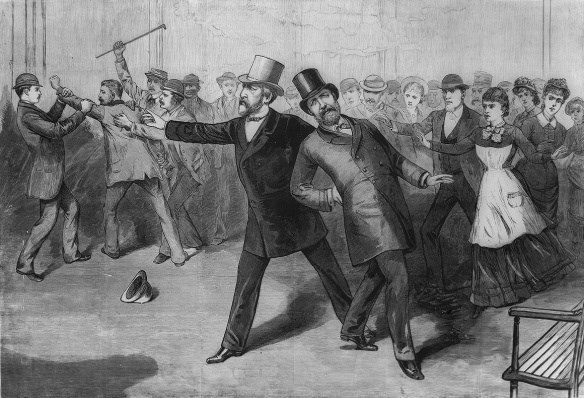
Frank Leslie’s Illustrated Newspaper
On July 2, 1881, President Garfield was scheduled to leave for a trip to New England. While some cabinet members and their wives were scheduled to go on the trip, Lincoln was unable to depart until the following day. He went to Washington, D.C.’s Baltimore and Potomac train station that morning to meet the President and let him know that the Lincolns would be along on July 3. He was about forty feet away and walking toward President Garfield and Secretary of State James G. Blaine when Charles Guiteau approached from behind and shot Garfield twice. By Lincoln’s own recollection, “I think I reached him in fifteen seconds.” Secretary Lincoln immediately sent for Dr. D.W. Bliss, then ordered four companies of soldiers to immediately come to the train depot for security. When Garfield was moved back to the White House, Lincoln made sure that “all intruders were out of the grounds and a strong military guard on duty there and another at the jail to prevent lynching and a reserve between.” As historian Jason Emerson notes, Lincoln’s decisive actions after the attack on Garfield were reminiscent of Secretary of War Edwin Stanton’s on the night Booth shot Abraham Lincoln. However, the memory of his father’s murder sixteen years before haunted him. “My god,” he said to a New York Times reporter the day after the shooting. “How many hours of sorrow I have passed in this town.”
President James A. Garfield died on September 19, 1881, eighty days after being shot. Vice President Chester A. Arthur was sworn in as the 21st President of the United States and traveled to Elberon, New Jersey, where Garfield died, to escort his predecessor’s body back to the capital. After Garfield’s late September funeral and once Congress convened in December 1881, Arthur kept only one cabinet officer appointed by Garfield: Robert Todd Lincoln, who served as Secretary of War until the end of the Arthur presidency.
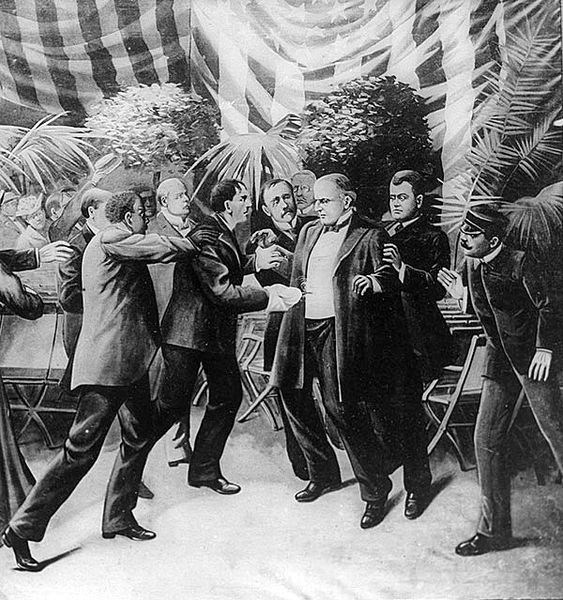
Library of Congress
After finishing his time as Secretary of War, Lincoln returned to private legal practice, then served as U.S. Minister to the Court of Saint James (the United Kingdom) under President Benjamin Harrison from 1889-1893. While living in England, Lincoln’s son, Abraham Lincoln II, called “Jack,” died of a post-surgery infection at just 16 years old.
After returning from England, Robert Lincoln became general counsel of the Pullman Palace Car Company. When founder George Pullman died in 1897, Lincoln was elevated to the company’s presidency. In 1901, the Lincolns vacationed all summer in New Jersey. As they traveled back to Chicago in early September, they decided to make a stop in Buffalo, New York to visit the Pan-American Exposition, a world’s fair intended to promote trade and friendship between the U.S., Canada, and Mexico. The Lincolns’ train pulled into the Buffalo train station on the evening of Friday, September 6. A Pullman employee was waiting and immediately handed Lincoln a telegram that read: “President McKinley was shot down by an anarchist in Buffalo this afternoon. He was hit twice in the abdomen. Condition serious.”
Lincoln immediately went to the home of John G. Milburn, president of the Pan-American Exposition, where McKinley was resting after a seemingly successful surgery to repair internal damage caused by Leon Czolgosz’s bullets. Lincoln spent a few minutes with the President and was convinced that McKinley would be fine. Lincoln saw the President again two days later and still believed he was improving, saying, “My visit has given me great encouragement” for McKinley’s recovery. He and his family left Buffalo for Chicago having enjoyed a visit to the Exposition and glad that McKinley was on the mend.
A week later, McKinley was dead of infection. Vice President Theodore Roosevelt had visited the wounded president at the same time as Robert Lincoln the previous week and then departed for a trip to the Adirondacks. Roosevelt hurried back to Buffalo and was sworn in as the 26th President of the United States on September 14, 1901. Shortly afterwards, Lincoln sent President Roosevelt a letter that read in part, “I do not congratulate you, for I have seen too much of the seamy side of the Presidential Robe to think of it as an enviable garment.”
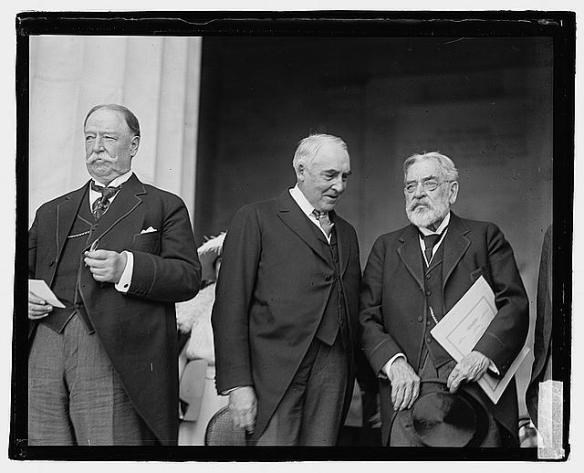
National Park Service
Amazingly, Robert Todd Lincoln had very close ties to three presidential assassinations. While the rational mind scoffs at the idea of any human as “cursed,” the emotions lead us to wonder if such a thing might actually be possible. However, the popular old stories about Robert Lincoln being “present” at the three murders are certainly untrue. He was not with his father when Booth attacked on April 14, 1865, though he was at the Petersen house when the elder Lincoln died the next morning. He was across the room but walking toward the President when Charles Guiteau felled Garfield on July 2, 1881. Lincoln personally attended and spoke with Garfield while the President lay on the train station floor. Finally, he was just entering the city of Buffalo when McKinley was shot on September 6, 1901.
While Robert Lincoln was certainly not cursed, it is understandable that many people-including Lincoln himself-feared he may be. More likely, however, is that Lincoln’s last name and his positions in life put him in close proximity to presidents far more often than most people. Also, Lincoln lived a very long life in times of great social and political upheaval that often resulted in violence. The cataclysmic Civil War, passionate debates over patronage and civil service reform, fears of government growing so powerful that anarchy seemed a plausible alternative—all of these issues came to the fore during Lincoln’s life and resulted in murders of American presidents. That his name was Lincoln and he attained high office and business success made Lincoln far more likely to be near presidents than most people, and the upheavals of the era made attacks on presidents far more likely. In other words, it was something of a macabre numbers game.
That certainly and understandably did not ease Robert Lincoln’s mind, though the idea that after McKinley’s death Lincoln refused to ever go around presidents again is a myth. Supposedly he once scoffed at an invitation to an event at the White House by saying, “If only they knew, they wouldn’t want me there. There is a certain fatality about presidential functions when I am present.” While there is no direct evidence that Lincoln ever actually said this, it certainly seems like a thought that might have crossed his mind.
Robert Lincoln’s last public appearance was on May 30, 1922, when he attended the dedication of the Lincoln Memorial in Washington, D.C. President Warren G. Harding presided over that dedication. Harding, of course, died in office just fourteen months later. Since he was not assassinated, however, it does not appear that anyone tried very hard to attribute his death to having shared a platform with Robert Lincoln just over a year earlier.
Robert Todd Lincoln died on July 26, 1926, just six days before his 83rd birthday. He was seemingly surrounded by death his entire life, yet persevered to carve out his own successes and legacy while also honoring his famous name. His was a long, extraordinary, and accomplished life, and he certainly deserves to be remembered as more than just his father’s son or the subject of silly myths about curses.
Written by Todd Arrington, Site Manager, James A. Garfield National Historic Site, July 2014 for the Garfield Observer.
Tags
- ford's theatre national historic site
- james a garfield national historic site
- lincoln boyhood national memorial
- lincoln home national historic site
- lincoln memorial
- theodore roosevelt inaugural national historic site
- william howard taft national historic site
- american people and government
- presidents
- presidential assassination
